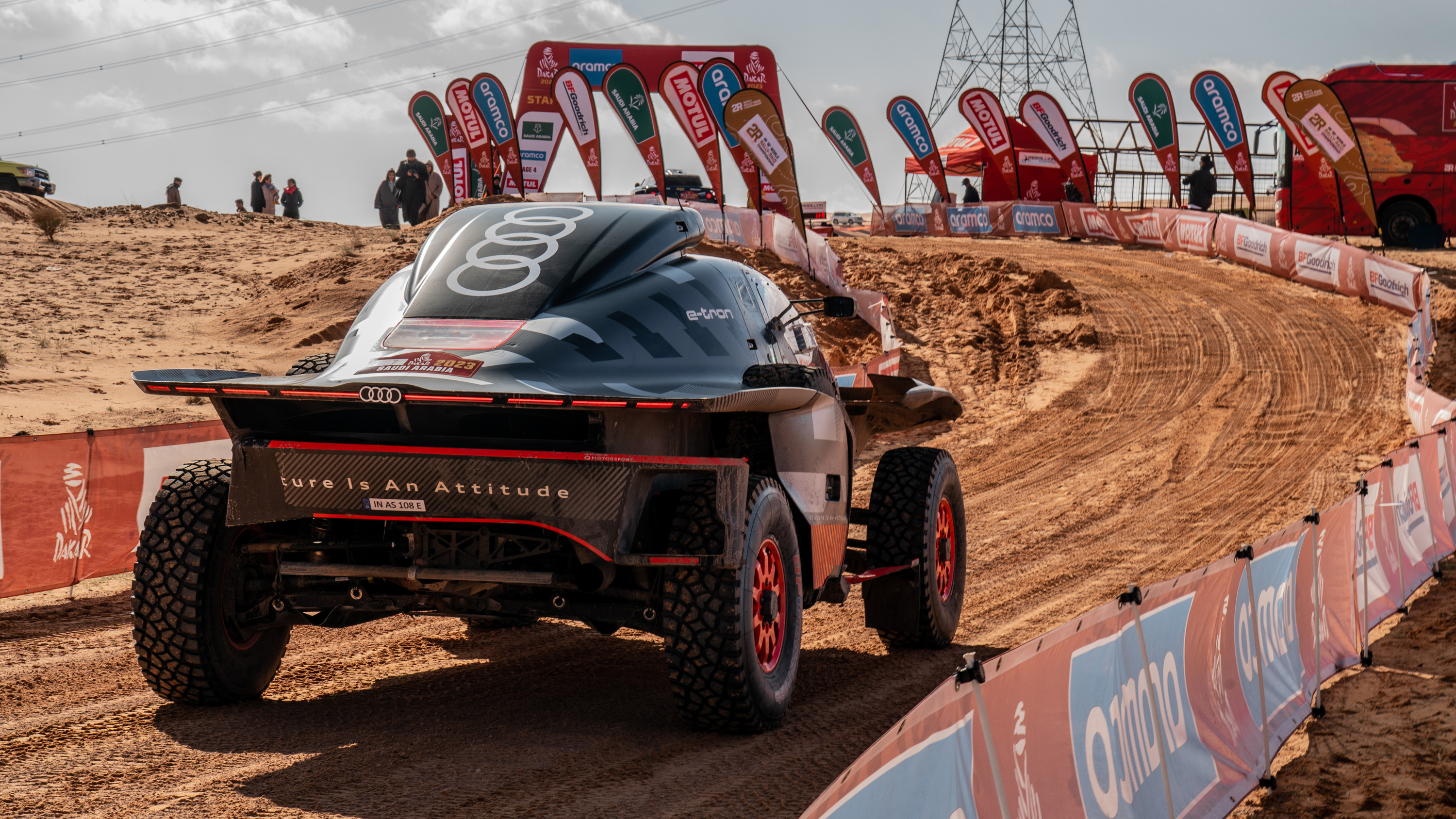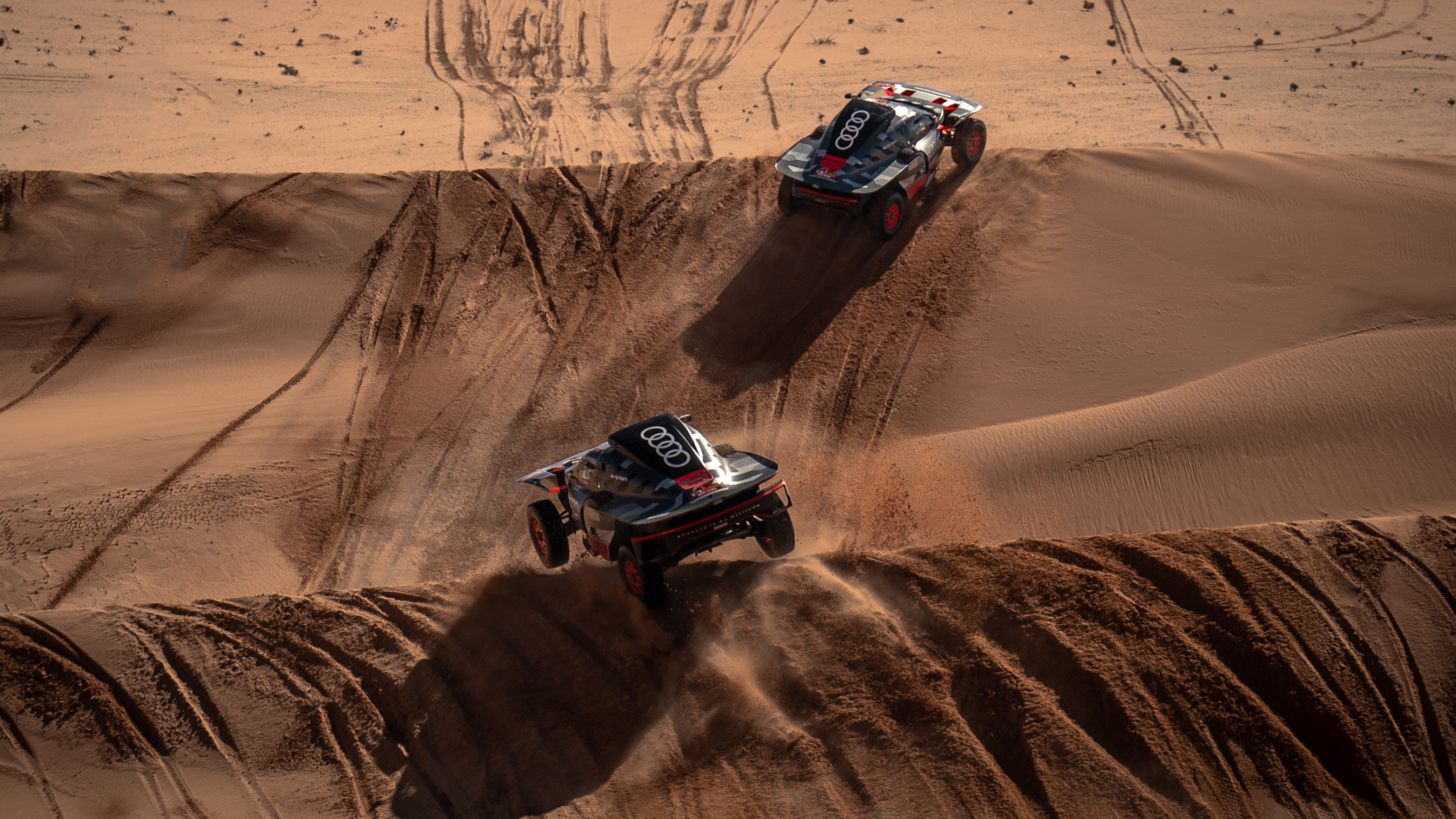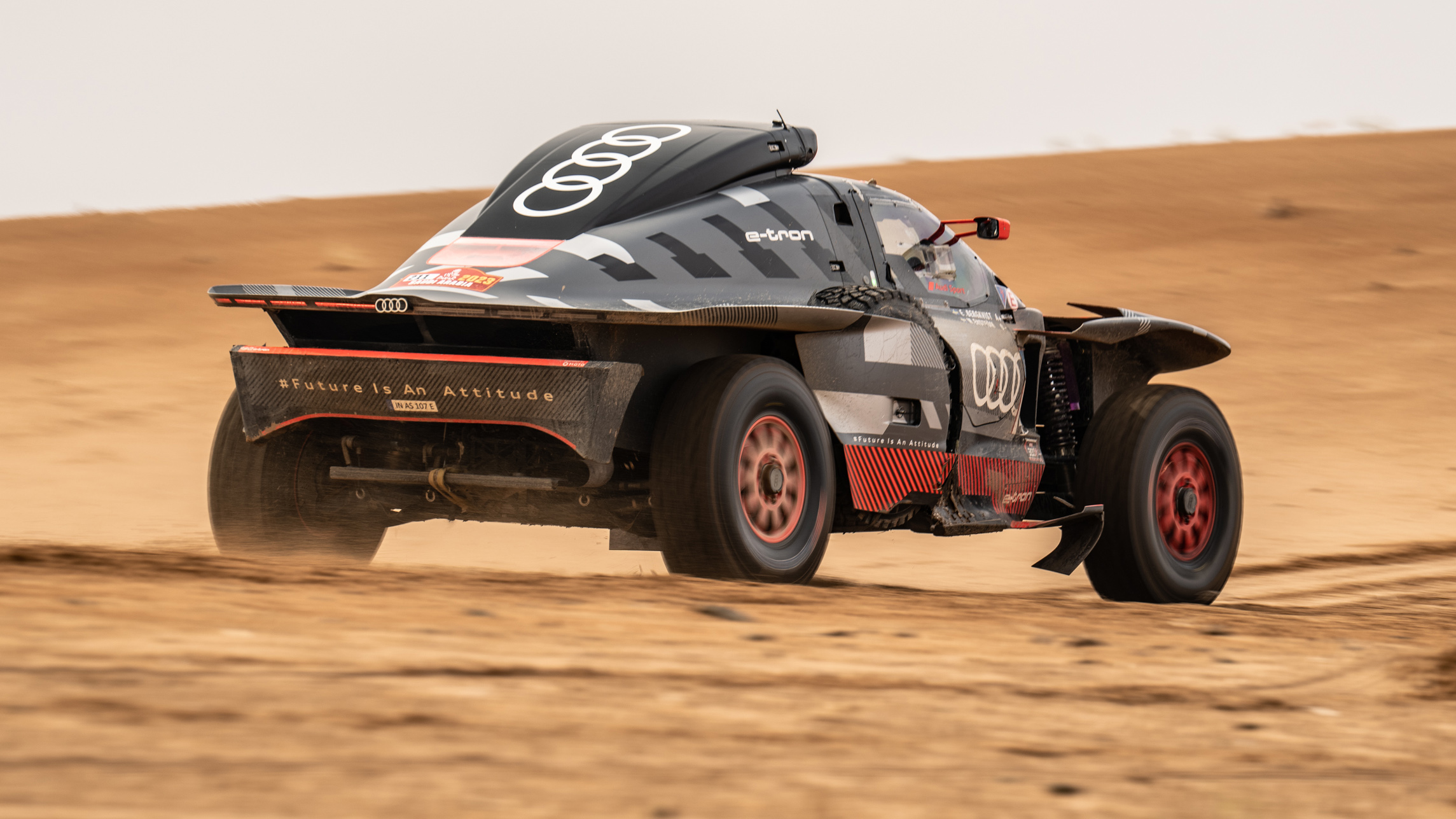
Audi’s 2023 Dakar Rally was a lesson in progress
Take a ringside seat at two weeks of non-stop off-road racing from one of the toughest motorsport events in the world
In its 45-year history there’s never been an easy Dakar Rally. But things are even trickier when you’re trying to break new ground and accelerate an electrified future at the same time. Audi knew this. And welcomed the challenge. It was all part of the deal when the famous four rings signed up to one of the greatest challenges in motorsport. In order to be pioneering, you need to face discomfort – however it’s served.
Having competed in the jewel in the crown of Rally Raid for the first time in 2022, for its 2023 campaign Audi Sport were no longer rookies; the Neuburg outfit had a year’s worth of experience, multiple stage successes and an Abu Dhabi Desert Challenge win under its belt. Plus, a lighter, more aerodynamic and fully-optimised version of its RS Q e-tron – the unique and daring Dakar racer with an alternative drive concept that combines an electric drivetrain with a high-voltage battery and a highly efficient energy converter.
Audi had all the ingredients in place to be successful at the two-week, 10,000km endurance epic. For starters, the updated RS Q e-tron proved its inherent speed with 14 stage podiums and three days spent in the overall lead of the toughest event on the motorsport calendar. A stellar reliability record emphatically showed that electrified powertrains can comfortably battle with more traditional internal combustion engines on sand, in floods, through mountain passes and over enormous desert dunes.
The Team Audi Sport mechanics were a triumph of endurance and dedication, working relentlessly for two weeks straight to ensure cars stayed in tip-top condition. Finally, the three drivers – Mattias Ekström, Stéphane Peterhansel and Carlos Sainz – and their utterly dependable navigators reaffirmed why they’re world-class.
After the Prologue on New Year’s Eve, a further 14 stages and 8,895km of driving through the heart of Saudi Arabia, Audi crossed the finish line and ended the 2023 Dakar with a sense of unfinished business. A spate of punctures and unfortunate incidents contributed to this year’s incredibly high attrition rate (just half of all competitors made it to the finish) and a best result of 14th in the final ranking for an RS Q e-tron, netted by Ekström and co-driver Emil Bergkvist after a trying campaign. But with it came a lot of learnings and invaluable experience for a return next year to take on the Dakar Rally in 2024.
Rofl Michl, the managing director of Audi Sport, says: “The Dakar showed that it’s one of the hardest races in the world. This year, it was really tough. Your world can change within one day. Of course, it was the decision that Audi Sport went to the Dakar to prove that electrification can stand up to these hardest of conditions. The technology works very well.
“I’m really proud of the work that has been done by all the team, engineers, mechanics, support members. Everybody put their hand in to deliver the best they could. For me, the end of the Dakar Rally 2023 is really the beginning of the preparation for Dakar 2024. Our preparation starts now. For sure, we will be back even stronger!”
This year’s rally-raid enduro could scarcely have started better for Audi: Ekström was the man to beat on the Prologue (a 13km time trial that determined the starting order) before two-time World Rally champion Sainz topped the order for the Sea Camp loop that made up Stage 1. The Spaniard and his co-driver Lucas Cruz maintained the overall lead the following day, despite being the first car onto the course to discover heavy rain had saturated a route littered with rocks, waiting to dish out punctures. The decidedly un-desert-like downpours didn’t abate, and Stage 3 was slashed by 70km. And those stones made themselves known when Sainz was forced to park up and replace the left-rear tow arm in addition to stopping for two punctures and a seized wheel nut.
That offered Peterhansel – the Dakar record-holder, with 14 overall wins – an opportunity to lead the Audi pack. Bouncing back from five punctures, he and Edouard Boulanger picked their way through the camel grass and managed the jumps of a high-speed Stage 4 to head a double team podium. Peterhansel clocked second ahead of Sainz. That result was reversed 24 hours later as Sainz led Peterhansel for the 375km loop (one of the toughest stages either driver had encountered in their long Dakar history) to the Ha’il bivouac.
Then came a difficult sixth stage. With Peterhansel and Sainz proving similarly speedy, they ran together over the dunes. After one of the larger crests, Peterhansel’s RS Q e-tron suffered a particularly hard landing. Navigator Boulanger bore the brunt, reporting back pain. With a return to Germany required, the #204 machine was withdrawn. Seconds after watching their team-mates come a cropper, Sainz caught the same dune. The front-left corner dug in to severely damage the suspension.
Team Audi Sport would recover the vehicle and start an extensive repair job so that, incredibly, Sainz could contest Stage 7. That immense camaraderie was called upon later in the day, too. Double DTM champion Ekström, while caught in the dust cloud of another car, tagged a rock that damaged the left-rear corner. Repairs were duly needed for the suspension, wheel and tyre. With Sainz hobbled the previous day, he pulled over so both drivers and co-drivers could complete the fixes and finish the route.
Sainz was on a mission the next day, running fastest before his charge for a fourth Dakar win was finally scuppered on Stage 9. Coming into a land over a dune, the front caught, and he flipped end-over-end. Despite their willingness to continue, Sainz and Cruz were forced to withdraw on safety grounds when the Team Audi Sport crew stripped the car that evening and found the repairs to be too serious.
Step forward, Ekström and Bergkvist. As the last Audi standing, their job was to bring the #211 car home. No mean feat considering the driver’s unfamiliarity on sand, just as the route moved into the Empty Quarter with its 650,000 square kilometres of desert… Yet the 2016 World Rallycross champ responded with metronomic consistency. After the rest day, he came back fighting with an astonishing run of five consecutive stage podiums to shoot from 38th in the general ranking to his final spot of 14th. That was despite leaving plenty of car performance in reserve as he racked up experience on the terrain.
“Meeting team members [on the rest day], I was starting to think, ‘OK, let’s take all the learnings we can’,” recalls the Swede. “There will come another year, another try. So, we tried to focus to get the best out of it to learn as much as we can. We will fight back. There is no question. The concept, as a whole, is a winning concept.”
Michl adds: “If you want to prove that a technology really works, you have to choose one of the hardest challenges in the world.” The 2023 Dakar Rally certainly fit the bill, not pulling a single punch. Next year’s edition of the off-road epic won’t be much kinder. But Audi will take it on, returning with a load more experience to shoot for an overall podium.
*This vehicle shown here is the Rally Dakar vehicle that is not available as a production model. Closed course, professional driver. Do not attempt. The Audi RS Q e-tron combines an electric drivetrain with an energy converter system comprising a TFSI engine and generator.
Featured

More from Top Gear
Trending this week
- Car Review
BMW iX3








